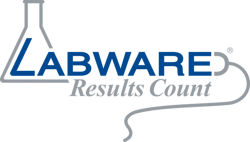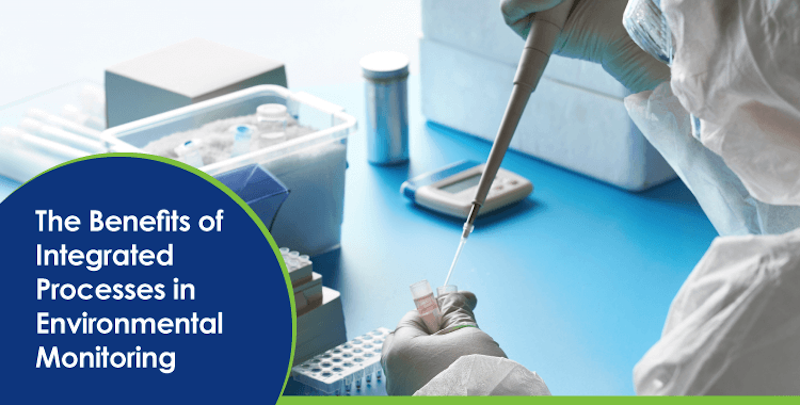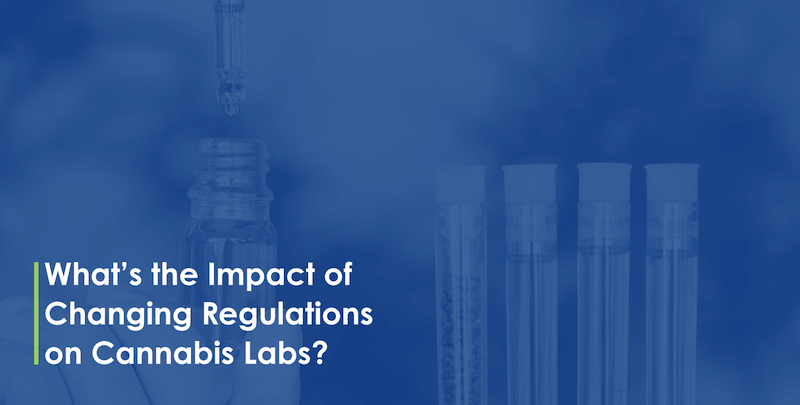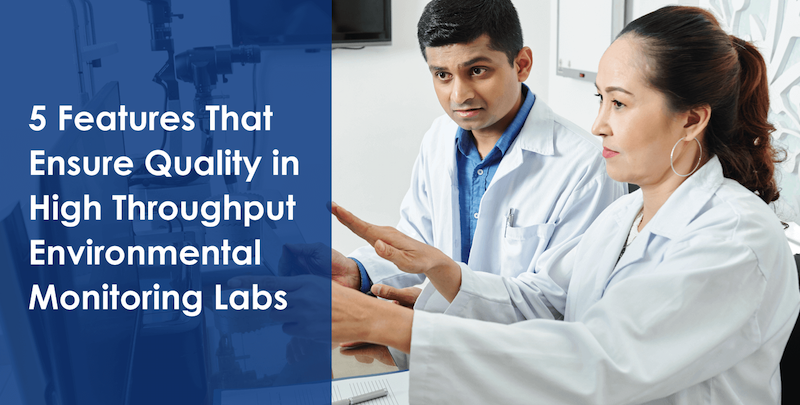
In the realm of environmental monitoring, implementing robust and efficient software is crucial for ensuring quality control and compliance with regulatory requirements. As an advanced professional in this field, you understand the importance of streamlining lab workflows and automating processes to reduce errors and improve overall efficiency.
Throughout this blog post, we will delve into various aspects of LIMS environmental monitoring. These areas include designing effective monitoring programs, automating scheduling with LIMS, centralizing lab workflow management, integrating instruments for consistent reporting, and enabling rapid yet precise reporting through key performance indicator (KPI) dashboards. By delving into the various aspects of LIMS environmental monitoring, you can gain valuable knowledge to leverage advanced Laboratory Information Management Systems and optimize your laboratory's environmental monitoring program.
Implementing a LIMS for Quality Control
A Laboratory Information Management System (LIMS) implementation is crucial to ensure maximum quality in high-throughput environmental monitoring labs. By automating planning, scheduling, sampling, testing, and reporting processes, LIMS helps maintain consistent operations while reducing the risk of human error. In this section, we will discuss how streamlining lab workflows through automation and reducing manual data entry errors enhance quality control.
Streamlining Lab Workflows with Automation
The key to maintaining quality in any laboratory setting lies in the efficiency of its workflows. A well-implemented LIMS environmental monitoring system can significantly improve workflow efficiency by automating various tasks that were previously performed manually. For instance:
- Scheduling sample collection from different sampling locations
- Tracking samples collected throughout their lifecycle within the lab
- Analyzing test results against predefined action limits
- Generating reports based on test outcomes
This level of automation not only saves time but also ensures consistency across all aspects of laboratory operations.
Reducing Manual Data Entry Errors
Data accuracy plays a critical role in maintaining high-quality standards within an environmental monitoring program. However, manual data entry is prone to errors which can compromise the integrity of your results and ultimately affect decision making processes based on those findings.
A robust LIMS solution addresses this issue by minimizing reliance on manual data input through features such as barcode scanning and integration with analytical instruments used for testing purposes. This reduces instances where incorrect information might be entered into the system or when samples are misplaced or mislabeled. A LIMS system furnishes a centralized repository for storing and administering all the necessary data, making sure it is easily accessible and uptodate.
By implementing a LIMS environmental monitoring system in your laboratory, you can streamline workflows through automation and reduce the risk of manual data entry errors. This will ultimately contribute to maintaining high-quality standards within your lab operations while providing accurate and reliable results to support informed decision making processes.
Implementing a LIMS for Quality Control can help streamline lab workflows, reduce manual data entry errors and ensure compliance with regulatory requirements. To take it one step further, designing an effective environmental monitoring program requires clear objectives to be established in order to guarantee success.
Key Takeaway: Implementing a LIMS for Quality Control is crucial to ensure maximum quality in high throughput environmental monitoring labs. Streamlining lab workflows with automation and reducing manual data entry errors contribute to enhanced quality control, ultimately maintaining high-quality standards within your lab operations while providing accurate and reliable results to support informed decision-making processes.
Designing an Effective Environmental Monitoring Program
To control quality in environmental monitoring labs, deliberate action and planning are necessary. A well designed program should be controlled, approved, monitored, and audited regularly to ensure that it meets the required standards and adapts to any changes or improvements needed over time. In this section, we will discuss the key components of an effective environmental monitoring program (EMP) for laboratories using LIMS.
Establishing Clear Objectives for Monitoring Programs
The first step in designing a successful EMP is defining its objectives. These may include detecting contamination sources, ensuring compliance with regulatory requirements such as FSMA, assessing the effectiveness of corrective actions, or evaluating overall facility hygiene. By establishing clear goals from the outset, your laboratory can tailor its environmental monitoring solution to meet these specific needs while maintaining efficiency and accuracy throughout all processes.
- Detecting contamination sources: Identify potential areas where contaminants could enter your facility or process flow.
- Ensure regulatory compliance: Adhere to federal regulations like FSMA by implementing proper sampling procedures at designated locations within your facility.
- Evaluate corrective actions: Assess whether implemented measures have effectively mitigated identified risks through ongoing testing and analysis.
- Maintain overall hygiene levels: Monitor cleanliness across various surfaces within your lab environment on a regular basis as part of routine maintenance efforts.
Ensuring Compliance with Regulatory Requirements
An essential aspect of any effective EMP is adherence to relevant industry regulations. This includes establishing action limits, determining appropriate sampling locations, and ensuring that all samples collected are processed according to established guidelines. By leveraging a LIMS solution, your laboratory can automate these processes, reducing the risk of human error while simultaneously streamlining workflows.
Action limits define the acceptable levels of contaminants in samples, which may vary depending on regulatory requirements or industry best practices. A robust environmental monitoring LIMS will allow you to set customizable action limits for each test parameter, enabling automatic alerts when results exceed predefined thresholds.
Determining sampling locations is another critical aspect of an EMP. Your lab should establish a systematic approach for selecting areas within your facility where samples will be taken based on potential contamination risks and compliance with regulatory standards. With a LIMS system in place, you can easily manage and track sampling points across multiple facilities or departments, ensuring consistency throughout your entire organization.
In addition to setting action limits and choosing sampling locations, it's crucial that all samples gathered are handled correctly from collection through analysis. This includes proper labeling, storage conditions (e.g., temperature), transportation methods if applicable (e.g., cold chain), as well as adherence to any required testing protocols such as incubation times or sample preparation techniques. By automating these steps using Laboratory Information Management Systems like LabWare LIMS software solutions, labs can minimize errors while maximizing efficiency during every stage of their environmental monitoring program.
Designing an effective environmental monitoring program requires a clear understanding of the objectives and regulatory requirements, as well as efficient resource utilization. Automating EM scheduling with LIMS is a powerful way to ensure that these goals are met while minimizing operational disruptions.
Key Takeaway: To ensure quality control in environmental monitoring labs, a well-designed program is necessary. Key components of an effective environmental monitoring program include establishing clear objectives, adhering to regulatory requirements such as FSMA, and automating processes using Laboratory Information Management Systems like LabWare LIMS software solutions.
Automating EM Scheduling
Environmental Monitoring (EM) scheduling can be automated using software, which ensures consistency across all aspects of laboratory operations. This not only improves efficiency but also allows better tracking of resource allocation and reduces potential delays caused by manual scheduling methods. By implementing an environmental monitoring LIMS, labs can optimize their workflows, minimize disruptions, and maintain high-quality standards in their operations.
Optimizing Resource Utilization through Smart Scheduling
A key benefit of automating EM scheduling with a Laboratory Information Management System is the ability to optimize resource utilization within the lab. The software's intelligent algorithms take into account factors such as equipment availability, personnel workload, and sampling locations when generating schedules for sample collection and testing. This results in more efficient use of resources while ensuring that samples are collected at appropriate intervals according to predefined action limits.
- Better allocation: With smart scheduling features provided by LIMS systems like LabWare, laboratories can allocate resources effectively based on current workloads or anticipated needs.
- Faster turnaround times: Automated planning helps reduce bottlenecks in the workflow process resulting in faster turnaround times for test results without compromising quality.
- Informed decision-making: Real-time visibility into resource usage enables lab managers to make informed decisions about staffing levels or equipment investments needed to support environmental monitoring programs efficiently.
Minimizing Operational Disruptions
Laboratories involved in environmental monitoring often face operational challenges due to unforeseen events such as equipment breakdowns or changes in regulatory requirements. A well-designed LIMS solution provides flexibility allowing labs to quickly adapt to these changes minimizing disruptions to the overall workflow process. Some key features include:
- Dynamic scheduling: LIMS systems can automatically adjust schedules based on real-time data, such as equipment downtime or unexpected sample influxes, ensuring that labs maintain their desired level of productivity.
- Compliance management: By automating the tracking and reporting of regulatory requirements, environmental monitoring LIMS solutions help labs stay compliant with evolving regulations while reducing the risk of non-compliance penalties.
- Data integrity assurance: With built in audit trails and electronic signature capabilities, a Laboratory Information Management System ensures that all samples collected and test results generated are traceable back to their origin, providing confidence in the accuracy and reliability of reported data.
In summary, implementing an environmental monitoring LIMS solution streamlines lab operations by automating EM scheduling processes. This not only optimizes resource utilization but also minimizes operational disruptions caused by unforeseen events or changing regulatory requirements. Ultimately, a structured LIMS system enables laboratories to maintain high quality standards in their environmental monitoring programs while maximizing efficiency and compliance with industry regulations.
Automating EM Scheduling with LIMS can help optimize resource utilization and minimize operational disruptions, making it an invaluable tool for businesses. Centralized Lab Workflow Management provides a comprehensive solution to further enhance traceability and improve collaboration between different departments.
Key Takeaway: Implementing an environmental monitoring LIMS solution can automate scheduling processes, optimize resource utilization and minimize operational disruptions. This helps laboratories maintain high quality standards in their operations while maximizing efficiency and compliance with industry regulations. The software's intelligent algorithms enable labs to allocate resources effectively based on current workloads or anticipated needs, resulting in faster turnaround times for test results without compromising quality.
Centralized Lab Workflow Management
Implementing a Laboratory Information Management System (LIMS) can greatly enhance the efficiency and quality of environmental monitoring labs by automating information gathering, sample processing tasks, and managing central lab workflows. With capabilities like instrument integration and barcode scanning, samples can be tracked and processed efficiently while minimizing chances of contamination or mix-ups. This leads to improved overall quality in output results generated by laboratories in the environmental industry, where professionals rely upon accurate and timely data to make informed decisions and mitigate risks associated with their work.
Enhancing Traceability throughout the Entire Process
LIMS provides an integrated solution for managing all aspects of your laboratory's workflow from planning through reporting. The use of barcodes on sampling containers ensures that each sample is uniquely identified at every stage in its lifecycle, from collection to analysis, making it easy to track progress against action limits set out within your environmental monitoring program. Furthermore, LIMS allows you to maintain detailed records about each sample collected including sampling locations, dates collected as well as any relevant metadata such as temperature or weather conditions during collection.
Improving Collaboration between Different Departments
- Data sharing: A centralized LIMS platform enables seamless collaboration among different departments involved in environmental monitoring processes. By providing real-time access to data across multiple teams, such as field technicians collecting samples, analysts performing tests or management overseeing operations, everyone stays informed about ongoing projects without having duplicate efforts or communication breakdowns.
- Audit trails: Implementing a LIMS system also ensures that all actions performed within the system are logged, providing a complete audit trail for regulatory compliance purposes. This allows your organization to demonstrate adherence to ISO 14000 Environmental Management standards and other relevant regulations.
- Standardized processes: LIMS helps standardize laboratory procedures by enforcing best practices across various departments. For example, predefined workflows can be set up for specific tests or analyses ensuring consistency in results regardless of who performs them, ultimately leading to better decision making based on reliable data.
In today's fast-paced environmental industry, it is essential to have an efficient and effective way of managing lab operations. By implementing a Laboratory Information Management System (LIMS) with features such as instrument integration, barcode scanning, and centralized workflow management capabilities, environmental monitoring labs can streamline their processes while improving overall quality output results generated. Furthermore, LIMS enhances traceability throughout the entire process allowing professionals to make informed decisions based on accurate data collected from sampling locations around the world, thus mitigating risks associated with their work in protecting our planet's natural resources.
Centralized Lab Workflow Management offers improved traceability and collaboration between different departments, making it an essential tool for any modern laboratory. With Instrument Integration Reporting Consistency, LIMS can provide a unified experience to personnel involved in the operation while simplifying instrument maintenance and calibration procedures.
Key Takeaway: Implementing a LIMS system can greatly enhance the efficiency and quality of environmental monitoring labs by automating information gathering, sample processing tasks, and managing central lab workflows. It also improves collaboration between different departments through data sharing, audit trails, and standardized processes. Overall, LIMS helps standardize laboratory procedures leading to better decision-making based on reliable data.
Instrument Integration and Reporting Consistency
Modern LIMS provide a unified experience for personnel involved in lab operations, reducing training costs and simplifying maintenance procedures while providing centralized record keeping to ensure consistent records with minimal demand from staff. This significantly reduces training costs and simplifies maintenance procedures. Additionally, having a record keeping mechanism in place ensures that records are maintained consistently with minimal demand from staff members who can then focus on more critical tasks at hand.
Simplifying Instrument Maintenance and Calibration
Maintaining and calibrating laboratory instruments can be time consuming and complex, especially when dealing with different manufacturers or models. By integrating all your instruments into one LabWare LIMS system, you can streamline these processes while ensuring that calibration schedules are adhered to consistently across all devices. With automated reminders for scheduled maintenance or calibration events, labs can minimize downtime due to instrument issues while maintaining optimal performance levels.
- Automated reminders: Receive notifications for upcoming maintenance or calibration events, reducing the risk of missed deadlines.
- Centralized documentation: Store all relevant documents related to instrument operation, including user manuals and certificates of calibration within the LIMS system.
- Instrument status tracking: Monitor real-time information about each device's operational status directly through LabWare LIMS dashboard.
Reducing Training Costs for Lab Personnel
The integration of various laboratory instruments into one comprehensive LIMS solution not only streamlines workflows but also minimizes training requirements for lab personnel. Since they only need to learn how to operate one software platform instead of multiple systems specific to each instrument type, this leads to significant cost savings and increased efficiency. Furthermore, the consistent user interface provided by LabWare LIMS ensures that staff can easily navigate through different functionalities without confusion or frustration.
- Unified platform: Learn one system instead of multiple instrument-specific software applications.
- User-friendly interface: Navigate through various functions with ease using a consistent design across all aspects of the LIMS solution.
- Faster onboarding: New employees can become proficient in lab operations more quickly when they only need to learn one integrated system for managing instruments and data analysis tasks.
In addition to simplifying maintenance procedures and reducing training costs, integrating laboratory instruments into a single LIMS platform also promotes reporting consistency. By automating data collection from various devices, labs can ensure accurate records are maintained while minimizing human error. This results in improved overall quality output which is essential for professionals who support environmental monitoring programs and rely upon precise and timely data to make informed decisions and mitigate risks associated with their work. To learn more about how LabWare's Environmental Monitoring solutions support your organization's needs, visit our Environmental Monitoring page.
By utilizing LIMS, lab personnel can benefit from streamlined instrument maintenance and calibration procedures while reducing training costs. Furthermore, with the use of a centralized record keeping mechanism in place, records are maintained consistently with minimal demand on staff members allowing them to focus more on critical tasks at hand. Rapid and precise reporting is also enabled through KPI dashboards which help ensure compliance with industry regulations.
Key Takeaway: Modern LIMS systems can manage multiple instruments on a single platform, reducing training costs and simplifying maintenance procedures. By integrating all laboratory instruments into one system, labs can streamline processes such as maintenance and calibration while ensuring consistent reporting and accurate record-keeping.
Rapid and Precise Reporting with LIMS
Implementing a Laboratory Information Management System (LIMS) in environmental monitoring labs enables precise and rapid reporting of test results, sample trending, and high volume lab operations management. KPIs, like dashboard displays, can be utilized to observe performance in real-time while assuring that the generated information is exact, dependable and meets regulatory requirements.
Real-time Monitoring through KPI Dashboards
A well-designed KPI dashboard provides an at-a-glance view of crucial metrics related to laboratory processes. These include parameters like turnaround time for samples collected, action limits exceeded, and sampling locations covered within specified timelines, among others. With access to this information in real-time via LIMS Environmental Monitoring solutions:
- Laboratory managers can quickly identify bottlenecks or inefficiencies in the workflow.
- Data-driven decisions can be made to optimize resource allocation and streamline processes.
- Potential issues are detected early on before they escalate into more significant problems affecting overall quality control efforts.
Ensuring Compliance with Industry Regulations
In addition to facilitating efficient workflows within environmental monitoring labs, LIMS plays a critical role in maintaining compliance with industry regulations. The system ensures that all necessary documentation is available for audits by providing comprehensive traceability throughout every step of the process - from sample collection to final reporting. Some of the ways LIMS supports compliance efforts include:
- Generating SOPs and other paperwork automatically to meet requirements.
- Maintaining a complete audit trail for all samples, tests, and results.
- Ensuring that only authorized personnel can access sensitive data or make changes to records within the system.
Laboratory Information Management Systems also offer integration with various regulatory standards such as ISO, EPA, and FDA, among others. This ensures that labs remain up-to-date with any changes in regulations while minimizing risks associated with non-compliance.
In today's competitive landscape where environmental monitoring is essential for maintaining public health and safety, LIMS Environmental Monitoring solutions provide an indispensable tool for laboratories seeking to optimize their operations while adhering to stringent industry requirements. By automating key processes like scheduling, managing sampling locations, and instrument integration and calibration, labs can significantly improve efficiency without compromising on quality control measures necessary for ensuring accurate and reliable test results in high throughput environments.
Key Takeaway: Implementing a LIMS in environmental monitoring labs enables rapid and precise reporting of test results, sample trending, and high volume lab operations management. Real-time monitoring through KPI dashboards allows for quick identification of inefficiencies while ensuring compliance with industry regulations by automating the generation of SOPs and maintaining a complete audit trail for all samples, tests, and results.
FAQs in Relation to Environmental Monitoring
What are the 4 types of environmental monitoring?
There are four main types of environmental monitoring: physical, chemical, biological, and radiological. Physical monitoring involves measuring factors like temperature, humidity, and air pressure. Chemical monitoring focuses on detecting pollutants in air, water, or soil samples. Biological monitoring assesses the presence of organisms such as bacteria or plants to evaluate ecosystem health. Radiological monitoring measures radiation levels from natural or human-made sources.
What are the 5 types of environmental monitoring?
The five key categories for environmental monitoring include atmospheric (air quality), aquatic (water quality), terrestrial (soil quality), ecological (plants and wildlife), and social-environmental assessments (human impact). These categories help identify potential hazards to public health and ecosystems while informing decision-making processes for sustainable development.
What is environmental monitoring in a laboratory?
In a laboratory setting, environmental monitoring refers to tracking various parameters that can affect sample integrity or personnel safety. This includes maintaining controlled conditions such as temperature, humidity levels, airflow patterns; assessing cleanliness through particle counts; testing surfaces for microbial contamination; evaluating airborne contaminants like volatile organic compounds; ensuring proper storage practices for chemicals.
What is the importance of environmental monitoring in the laboratory?
Environmental monitoring plays a crucial role in laboratories by ensuring consistent test results with minimal errors due to external factors affecting sample integrity. It helps maintain compliance with regulatory requirements related to lab operations' safety aspects while protecting staff members from exposure risks associated with hazardous substances or conditions. Additionally, it contributes to the overall quality control and assurance processes within a laboratory.
Conclusion
In conclusion, implementing a Laboratory Information Management System (LIMS) for environmental monitoring can streamline lab workflows, reduce manual data entry errors, and optimize resource utilization through smart scheduling. By establishing clear objectives and ensuring compliance with regulatory requirements, an effective environmental monitoring program can be designed to enhance traceability throughout the entire process while improving collaboration between different departments. Additionally, instrument integration and rapid reporting features offered by modern-day LIMS provide a centralized record-keeping mechanism that ensures records are maintained consistently with minimal demand on staff members.
For those looking to implement an environmental monitoring LIMS solution for their laboratory needs, LabWare offers comprehensive solutions that meet industry standards while providing reliable support. Discover how our comprehensive solutions can meet your organization's industry standards and provide reliable support.
Contact LabWare today to learn more about our environmental monitoring LIMS solutions!
